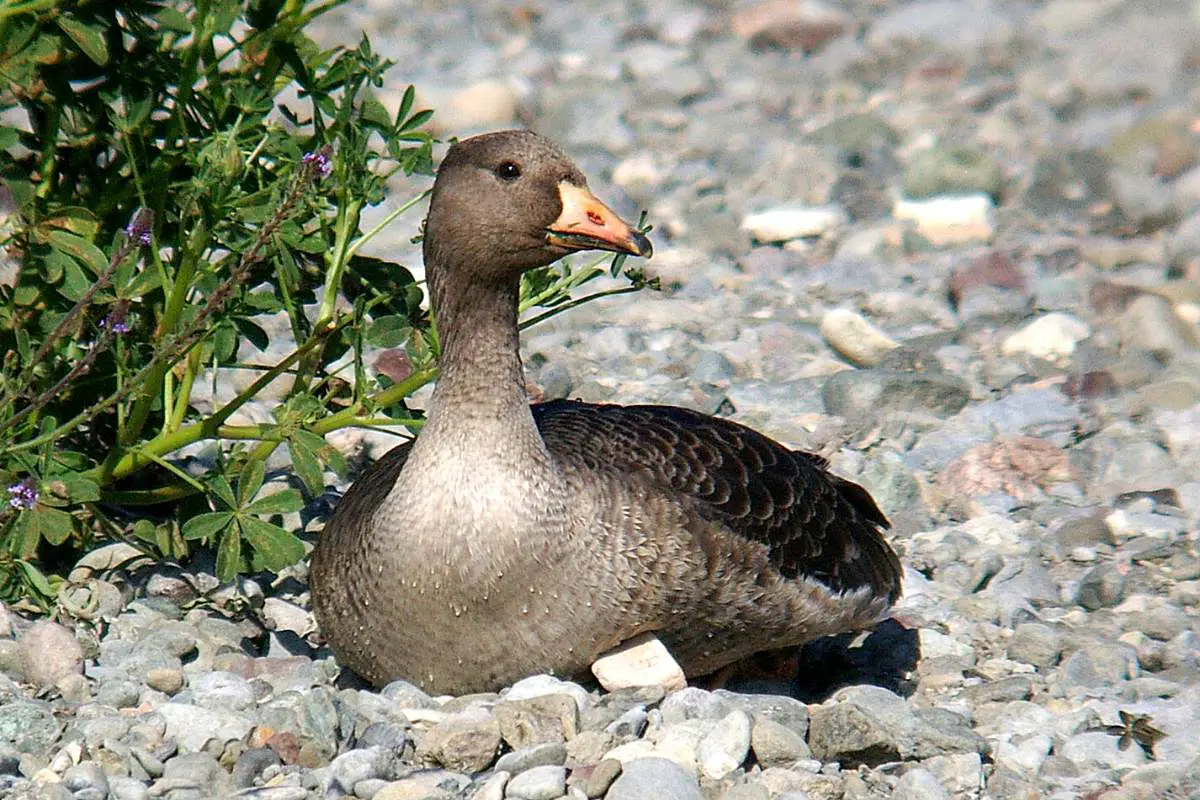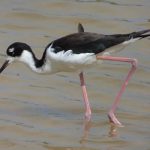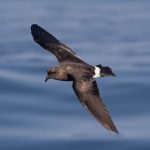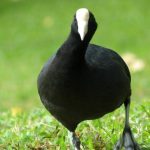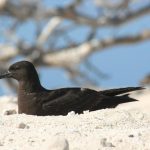Common Name: Greater White-fronted Goose
Scientific Name: Anser albifrons| Size | Diet | Range in Hawaii | Status in Hawaii |
|---|---|---|---|
| 25 in. - 30 in. | grasses, sedges, and aquatic plants | Oahu, Kauai, or Big Island | Least Concern |
The Greater White-fronted Goose (Anser albifrons) is a species of goose that is native to the northern regions of Europe, Asia, and North America. The Greater White-fronted Goose is named for the distinctive white patch on its forehead, which is visible even from a distance.
Greater White-fronted Goose
Appearance
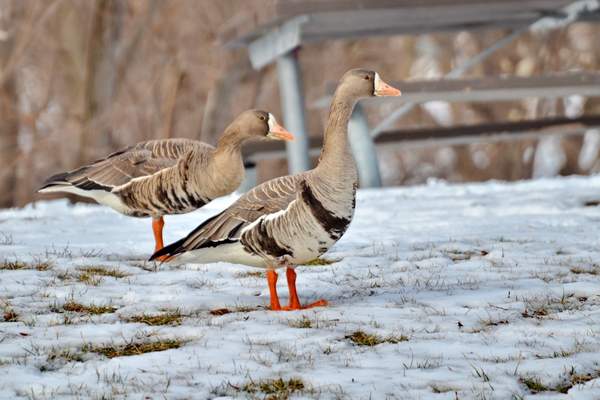
It is a medium-sized goose, with a body length of about 25-30 inches and a wingspan of up to 45 inches. It has a pale gray body with a black tail, and orange legs and bill white patch on its forehead. The male and female are similar in appearance, with the male being slightly larger.
Diet
Greater White-fronted Goose is an opportunistic feeder that will eat whatever food is available in its environment. It feeds on a variety of plant material including grasses, sedges, and aquatic plants.
It also eats insects and invertebrates. Greater White-fronted Goose also feeds on a wider range of plant material, including grains, seeds, and roots.
Behavior
The Greater White-fronted Goose (Anser albifrons) is a social species that is typically found in large flocks, particularly during the non-breeding season. It is a migratory species, and it breeds in the tundra regions of the Arctic. During the non-breeding season, it can be found in a variety of habitats.
The Greater White-fronted Goose is a vocal species, and it uses a variety of calls to communicate with other geese. It has a distinctive honking call that is used for long-distance communication, as well as a variety of other calls that are used for closer range communication.
The Greater White-fronted Goose is a strong flyer, and it is capable of traveling long distances during its migrations. It typically migrates in large flocks, and it follows the same routes each year.
Nesting
The male and female form a monogamous pair bond and work together to build the nest, which is a shallow depression in the ground lined with grasses and other plant material. The female lays a clutch of 3-7 eggs, and both parents help to incubate them.
The eggs are incubated for about 25-28 days, and the chicks are precocial, meaning that they are born with a full coat of down and are able to leave the nest shortly after hatching. Both parents help to care for the chicks and protect them from predators.
The Greater White-fronted Goose is a social species and typically nests in colonies with other geese. The size of the colony can vary, but it can sometimes include hundreds or even thousands of nests. The geese are territorial and will defend their nests from predators and other geese.
After the chicks hatch, the family group remains together for a few weeks before the chicks are able to fly. Once the chicks are able to fly, the family group breaks up and the adults and chicks go their separate ways. The adults molt their feathers and prepare for the next breeding season, while the chicks begin their migration to their non-breeding range.
Habitat
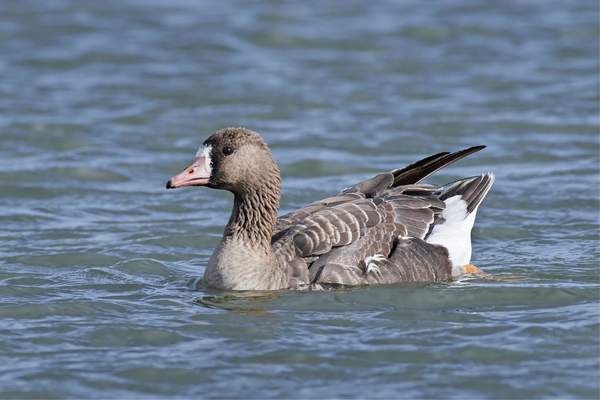
The Greater White-fronted Goose breeds in the tundra regions of the Arctic. During the breeding season, it can be found in a variety of habitats including open tundra, marshes, and river valleys. It nests on the ground in a shallow depression lined with grasses and other plant material.
During the non-breeding season, the Greater White-fronted Goose can be found in a variety of habitats including grasslands, agricultural fields, and wetlands.
Range
In Hawaii, the Greater White-fronted Goose is a rare visitor, and it is not known to breed on the islands.
Conservation Status
The Greater White-fronted Goose (Anser albifrons) is not considered to be an endangered species, but its populations have declined in some areas due to habitat loss and overhunting. It is classified as a species of “Least Concern” by the International Union for Conservation of Nature (IUCN) Red List of Threatened Species, which means that it is not currently facing a high risk of extinction.
Interesting Facts
1. Female Greater White-fronted Geese gain weight
Before migrating north, female Greater White-fronted Geese gain 30% more weight to fuel migration and egg production.
2. Oldest recorded Greater White-fronted Goose
The oldest recorded Greater White-fronted Goose was at least 25 years, 6 months old when it was found in Louisiana in 1998. It had been banded in Nunavut in 1975.
3. Plays vital role in the functioning of the ecosystem
Greater White-fronted Goose is a keystone species in some ecosystems, meaning that it plays a vital role in the functioning of the ecosystem and the survival of other species. As a herbivore, it feeds on a variety of plant material including grasses, grains, and aquatic plants, which helps to control the growth of these plants and can have a positive impact on the overall health of the ecosystem.
4. They can cause problems sometimes
One of the main problems caused by Greater White-fronted Geese is crop damage which can lead to losses for farmers and other landowners. They can also cause problems for airport operations, as they can be attracted to the grassy areas around airports and can be a hazard for aircraft. However, these problems are usually limited and can often be managed through proper planning and conservation efforts.
Frequently Asked Questions:
Does Greater White-fronted Goose pairs stay together for many years?
It is not uncommon for Greater White-fronted Goose pairs to stay together for many years. However, the length of time that a pair stays together can vary, and it is not known how long the average pair stays together. It is also possible for pairs to break up and form new pair bonds with other geese.
How long does a Greater White-fronted Goose live?
The lifespan of the Greater White-fronted Goose can vary depending on a variety of factors including habitat, diet, and predation. On average, Greater White-fronted Geese can live for about 15-20 years in the wild, although some individuals may live for longer.
How do Greater White-fronted Geese communicate?
The honking call of the Greater White-fronted Goose is a loud, ringing sound that is easily recognizable. It is typically used for long-distance communication and can be heard from a distance of several miles. This call is used to communicate with other geese and to keep the flock together.
